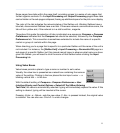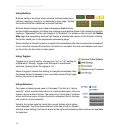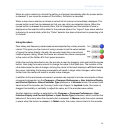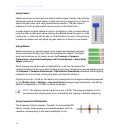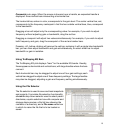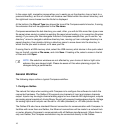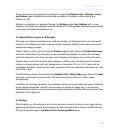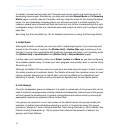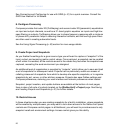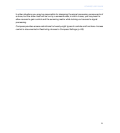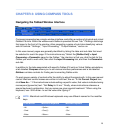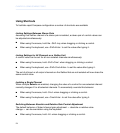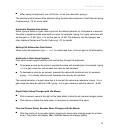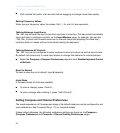
You may configure link groups through the [Galileo Unit] > Settings > Link Groups page. First
determine which channels will share identical settings: these are the channels you’ll wish to
assign to a common link group. When this is done you will be able to adjust the same control
on multiple channels simultaneously, either by selecting a channel in the group and then adjusting
the control (default mode); or by adjusting the control in a channel that belongs to the link group
(alternative mode).
Note that control value changes can be replicated as absolute or relative changes. See Choosing
Absolute or Relative Linked Channel Gain Control Changes (p. 45) for usage details.
6. Atmospheric Correction and Array Correction
Before fine-tuning loudspeaker outputs, atmospheric correction and array correction should
be configured. Atmospheric correction takes into account environment conditions and
loudspeaker distances to correct for high-frequency attenuation. Array correction mitigates
low- and mid-frequency build-up due to coupling effects in loudspeaker arrays.
Atmospheric correction is calculated using temperature, humidity, altitude, and loudspeaker
distance. The first three variables are assigned on a per-Galileo basis, on the [Galileo Unit] >
Settings > Environment page; the latter on a channel-by-channel basis, on the [Galileo Unit]
> Output Processing > Channel Settings pages.
Array correction is available for Meyer Sound M Series arrays. Highly-tuned EQ curves have
been developed for each particular M Series product. Array correction configuration is managed
on the [Galileo Unit] > Settings > Array Correction page.
These settings can create very large changes in gain level across parts of the signal frequency
range. Before using atmospheric and array correction, be sure you understand when and how
to use them. See the Using Signal Processing (p. 53) section for more usage details.
7. Connect SIM3
The Meyer Sound SIM-3022 Audio Analyzer is used to quickly and accurately measure the
frequency, phase response, and signal-to-noise ratio of components in the acoustic signal path
for all combinations of inputs and outputs. It is a superlative tool for determining optimal
loudspeaker placement and appropriate acoustic environment correction. When connected to
a Galileo 616, the Galileo is used as a line switcher, eliminating the need for any additional
patching.
19
COMPASS USER GUIDE



